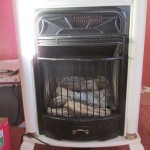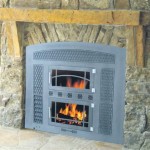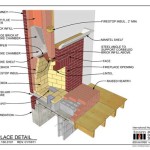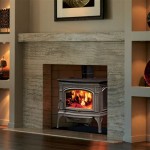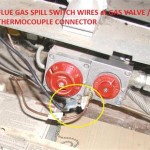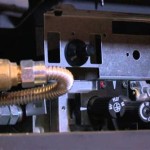Englander Fireplace Insert Blower: Enhancing Heating Efficiency and Comfort
Englander fireplace inserts represent a popular choice for homeowners seeking to improve the heating efficiency of their existing fireplaces. These inserts, designed to fit within the fireplace opening, offer a more controlled and effective method of heating compared to traditional open fireplaces. A crucial component in maximizing the performance of an Englander fireplace insert is the blower, also known as a fan kit. The blower plays a pivotal role in circulating heated air throughout the room, thereby increasing the overall heating area and distributing warmth more evenly.
Without a blower, a significant portion of the heat generated by the fireplace insert remains concentrated near the unit itself. This creates a noticeable temperature difference, with areas closer to the fireplace being significantly warmer than those further away. The blower actively combats this stratification by forcing heated air out of the insert and into the room, promoting a more uniform temperature distribution. This translates to improved comfort and reduced energy consumption, as the central heating system does not have to work as hard to maintain a consistent temperature throughout the home.
Understanding the Function of an Englander Fireplace Insert Blower
The primary function of an Englander fireplace insert blower is to enhance heat circulation. These blowers are typically located at the rear or beneath the firebox of the insert. They draw cool air from the room into the unit, pass it over the heated surfaces of the firebox, and then expel the warmed air back into the room. This forced-air circulation is far more efficient than relying solely on natural convection, which occurs when warm air rises. Convection currents can be slow and inefficient, especially in larger rooms with high ceilings. The blower significantly accelerates the process of heat distribution, resulting in quicker and more effective heating.
Most Englander fireplace insert blowers are equipped with variable speed controls. These controls allow users to adjust the fan speed based on their heating needs and preferences. During periods of high demand, such as during cold winter evenings, the blower can be set to a higher speed to maximize heat output. Conversely, on milder days, the speed can be reduced to maintain a comfortable temperature without overheating the room. This flexibility provides users with greater control over their heating environment and helps to conserve energy.
The blower's operation is often linked to a thermostat sensor. This sensor monitors the temperature of the firebox and automatically activates the blower when the firebox reaches a certain temperature. This feature eliminates the need for manual intervention and ensures that the blower only operates when it is actively contributing to heat distribution. Once the fire dies down and the firebox cools, the thermostat will automatically shut off the blower, preventing it from circulating cool air and potentially creating a draft. These automatic features contribute to the user-friendliness and overall efficiency of the Englander fireplace insert.
Benefits of Using an Englander Fireplace Insert Blower
The advantages of utilizing an Englander fireplace insert blower are numerous and directly impact both comfort and energy efficiency. Improved heat distribution is arguably the most significant benefit. By actively circulating heated air, the blower eliminates cold spots and ensures a more consistent temperature throughout the room. This is particularly beneficial in larger spaces or homes with poor insulation, where temperature variations can be more pronounced. With a blower, the heat generated by the fireplace insert is maximized, making the room feel significantly warmer and more comfortable.
Beyond improved heat distribution, the blower also contributes to faster heating times. Rather than waiting for the room to gradually warm up through convection, the blower rapidly disperses the heat generated by the insert. This is especially useful when the room is initially cold, allowing users to quickly achieve a comfortable temperature. The speed at which the blower can heat a room can be significantly faster than relying solely on the natural circulation of warm air.
Another key benefit is the potential for reduced heating costs. By efficiently distributing heat, the blower allows the fireplace insert to heat a larger area and reduce the reliance on the central heating system. This can lead to substantial energy savings, especially during periods when the fireplace insert is used as a primary heating source. The reduction in central heating usage translates directly into lower energy bills and a smaller carbon footprint.
Furthermore, some Englander fireplace insert blowers are designed with noise reduction features. While all blowers generate some level of noise, manufacturers have incorporated technologies to minimize the sound produced during operation. This may include using specialized fan blades, vibration dampening materials, and optimized motor designs. Quieter blowers enhance the overall user experience by providing efficient heating without creating excessive noise pollution.
Maintaining and Troubleshooting an Englander Fireplace Insert Blower
Proper maintenance is essential for ensuring the longevity and optimal performance of an Englander fireplace insert blower. Regular cleaning is crucial for preventing dust and debris from accumulating on the blower motor and fan blades. Dust buildup can impede airflow, reduce efficiency, and even cause the blower to overheat. It is recommended to clean the blower at least once a year, or more frequently if the fireplace insert is used heavily. To clean the blower, disconnect the power supply and use a vacuum cleaner with a brush attachment to remove dust and debris from the motor, fan blades, and surrounding areas.
Another important aspect of maintenance is checking the blower's air intake vents. These vents can become blocked with dust, pet hair, or other debris, restricting airflow and reducing the blower's effectiveness. Regularly inspect the vents and clear any obstructions to ensure proper ventilation. Adequate airflow is essential for preventing the blower from overheating and ensuring optimal performance.
Troubleshooting common blower issues is also essential. If the blower stops working, the first step is to check the power supply. Ensure that the blower is properly plugged in and that the circuit breaker has not tripped. If the power supply is not the issue, the problem may lie with the thermostat sensor. If the sensor is faulty, it may not be activating the blower even when the firebox is hot. In such cases, the thermostat sensor may need to be replaced.
Another common issue is a noisy blower. Excessive noise can be caused by loose fan blades, a worn-out motor, or debris lodged within the blower housing. Inspect the fan blades for signs of damage or looseness and tighten any loose screws. If the noise persists, the motor may be nearing the end of its lifespan and require replacement. If debris is suspected, carefully remove the blower housing and clear any obstructions.
In some cases, the blower may be running but not producing adequate airflow. This can be caused by a clogged air filter (if equipped), a damaged fan blade, or a weakened blower motor. Clean or replace the air filter, inspect the fan blades for damage, and consider replacing the blower motor if it is showing signs of weakness.
When performing maintenance or troubleshooting, always disconnect the power supply to the fireplace insert to prevent electrical shock. If you are not comfortable performing these tasks yourself, it is best to consult a qualified technician. Attempting repairs without proper knowledge or experience can be dangerous and may void the warranty.
Selecting the correct replacement blower is crucial. When replacing an Englander fireplace insert blower, it is imperative to choose a replacement that is specifically designed for your model. Using an incompatible blower can result in poor performance, damage to the fireplace insert, or even safety hazards. Consult the owner's manual or contact the manufacturer to determine the correct replacement blower model. Ensure that the replacement blower has the same voltage, wattage, and airflow specifications as the original.

Englander 15 W06 Wood Stove With Blower Rockford Chimney

Englander Small Room Air Blower For Wood Stoves Ac 16 The Home Depot

Englander 32 Nc Wood Stove The Cabin Depot

Englander Blue Ridge 500 Wood Stove With Blower Esw0012 Rise

Englander 15 W06 Wood Stove With Blower Rockford Chimney

Englander 15 W06 Wood Stove With Blower Esw0017 Fire Pit Surplus

Ac 16 Blower Fan Englander Summers Heat Timber Ridge Wood Stoves

Stoves Wood Englander 15 W08 Stove With Blower Esw0015

Englander Large Room Air Blower For Wood Stoves Ac 30 The Home Depot

Englander Blue Ridge 150 I Wood Insert At Obadiah S Woodstoves
Related Posts

